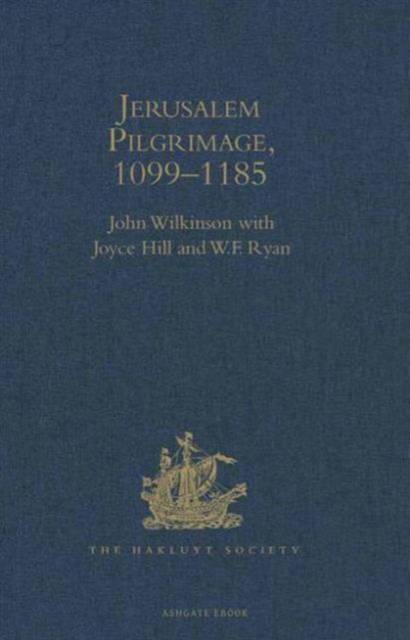
- Retrait gratuit dans votre magasin Club
- 7.000.000 titres dans notre catalogue
- Payer en toute sécurité
- Toujours un magasin près de chez vous
- Retrait gratuit dans votre magasin Club
- 7.000.000 titres dans notre catalogue
- Payer en toute sécurité
- Toujours un magasin près de chez vous
Description
In the Latin Kingdom of Jerusalem many pilgrims came to Jerusalem. The translations in this book are of seventeen western accounts of pilgrimage, written between 1099 and 1185, and there are two additional accounts from eastern pilgrims, Abbot Daniel from Russia and John Phocas from Antioch. As a whole this collection shows the gradually developing way in which western Christians understood the Holy Places. Some early pilgrims depended on authorities, many of whom by 1099 were out-of-date. They tried to deliver the truth about the Holy Places and to be reticent about their own reactions. But the pilgrims who appear later in the collections made their own archaeological judgements, and were more free about their own reactions. Pilgrimage after 1099 was altered by the fact that by their victory over Jerusalem the Dome of the Rock fell into the Crusader's hands. Otherwise the differences of practice between eastern and western pilgrims were slight. Thus eastern pilgrims visited the Greek and western pilgrims the Latin monasteries. Western pilgrims had a different idea of the location of Emmaus, and before 1185 a western Way of the Cross was beginning to take shape. These were slight differences, and in general all Christian pilgrims, whether from east or west, visited the same Holy Places as they had during the preceding period. Most of the works in this collection were translated into English a century ago by the Palestine Pilgrim's Text Society. But these texts were produced separately as pamphlets, and lacked a general introduction. In this book therefore the texts are retranslated, sometimes from more accurate texts. In introducing the texts some valuable new evidence from archaeology has been used and enabled a new assessment of their dates.
Spécifications
Parties prenantes
- Auteur(s) :
- Editeur:
Contenu
- Nombre de pages :
- 384
- Langue:
- Anglais
- Collection :
Caractéristiques
- EAN:
- 9780904180213
- Date de parution :
- 31-01-99
- Format:
- Livre relié
- Format numérique:
- Genaaid
- Dimensions :
- 156 mm x 233 mm
- Poids :
- 883 g







